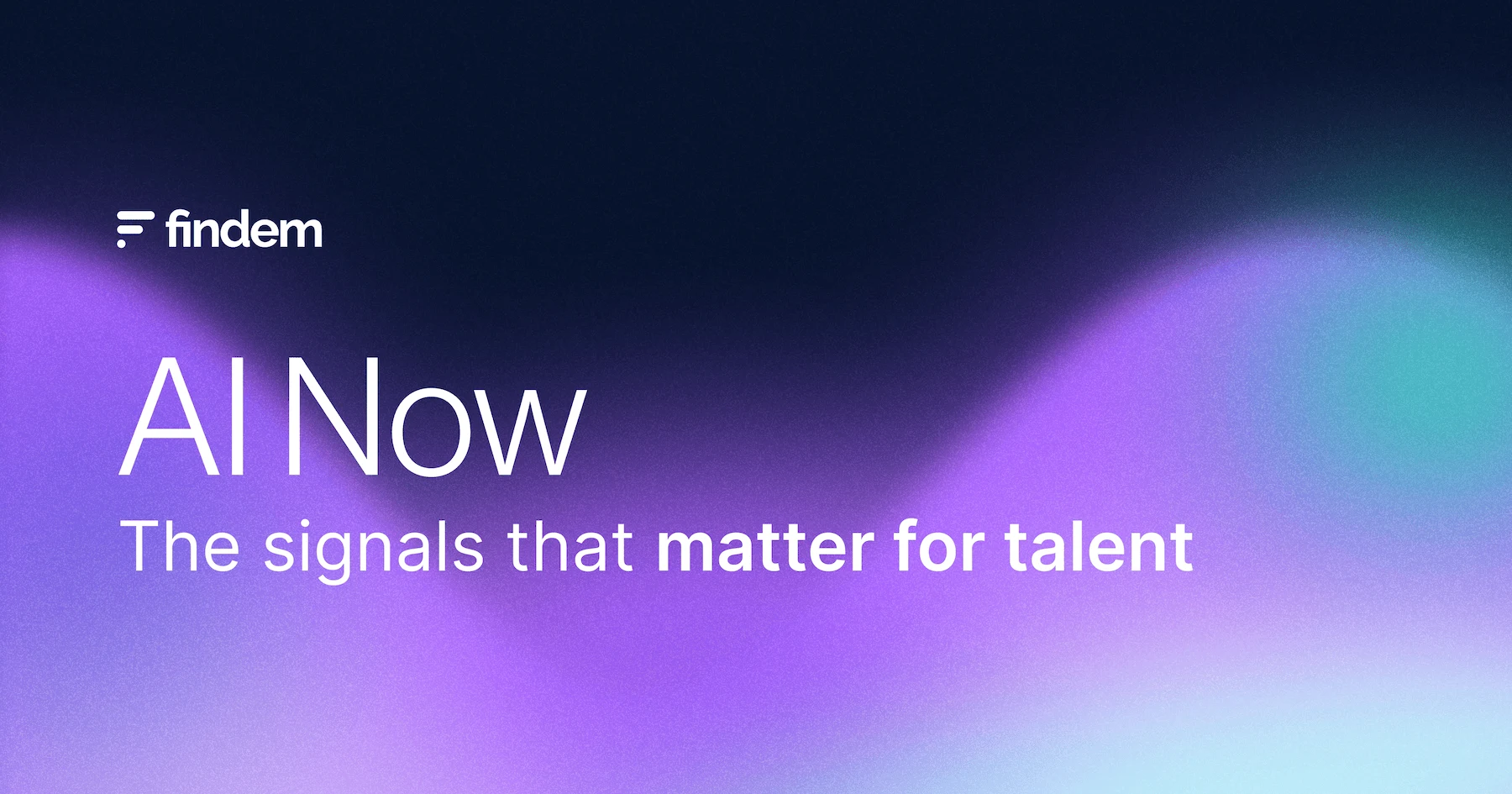.svg)

.svg)
AI Now is Findem’s weekly lens into the latest developments around enterprise AI — what’s real, what’s risky, and what’s reshaping work. Each edition spotlights the stories that matter most for talent and business leaders.
As AI investment and infrastructure scale at breakneck speed, the ripple effects are hitting enterprise leaders on every front — from cloud costs to hiring strategies to workforce reskilling. This week’s highlights show how compute scarcity, mega buildouts, and automation of frontline work are rewriting the rules of business. For those tasked with workforce strategy, the signals are urgent: agility, foresight, and people-centric AI adoption are now critical.
Nvidia and OpenAI strike a $100B chip and infrastructure deal
What happened
Nvidia and OpenAI signed a letter of intent for a $100B partnership to deploy at least 10 gigawatts of Nvidia hardware, training next-generation AI models at “superintelligence” scale. The first phase is expected in late 2026.
Why it matters
This deal marks a new era in the competition for compute resources, one that will directly affect enterprise AI strategies. With GPU demand projected to soar, cloud costs are likely to rise while access to cutting-edge compute may become concentrated among only the largest players.
Beyond cost, the energy footprint — equivalent to powering eight million households — will push ESG and sustainability into the center of enterprise AI planning. Leaders must now weigh not only the financial implications of AI adoption, but also its operational and environmental impact.
The signal for talent
This deal confirms that AI transformation isn’t just about models — it’s about people. Leaders must upskill and redeploy workforces to maximize the ROI of AI adoption, balancing access to scarce compute with the capacity of human teams. Success signals, not resumes or titles, will define who can adapt and thrive. How should CHROs and CIOs partner to close the skills gap that infrastructure deals like this will expose?
OpenAI announces five new “Stargate” data centers
What happened
OpenAI announced plans for five new U.S. data centers, in partnership with Oracle (three sites) and SoftBank (two sites), adding 7 gigawatts of national AI capacity.
Why it matters
The scale of these buildouts is set to reshape the competitive landscape for talent, energy, and security. Each new hyperscale facility accelerates the regional race for specialized expertise in engineering, power management, and large-scale systems integration.
At the same time, concentrating so much capacity in the hands of a few providers raises questions of dependency, resilience, and security risk for enterprises that rely on AI platforms. Ultimately, the sprawl of data centers changes the tech infrastructure map as well as the map of workforce demand and talent competition.
The signal for talent
The real bottleneck is skills. Recruiting people who can build, scale, and maintain hyperscale infrastructure will separate AI-ready organizations from those left behind. Generic AI can’t identify this expertise; only a people-native model grounded in success signals and organizational DNA can surface it. How will HR leaders source talent for a world where the infrastructure race dictates enterprise AI access?
AI reshapes blue-collar jobs
What happened
A CBS News report found that automation is increasingly displacing trade, logistics, and service work — industries once thought insulated from AI disruption.
Why it matters
The impact of AI on the workforce is no longer confined to knowledge workers and white-collar roles. Blue-collar and frontline industries — from warehouses to repair services — are now seeing meaningful automation, raising both economic and social stakes.
For enterprises, this means confronting not only the operational efficiencies AI brings but also the reputational and cultural challenges of workforce displacement. Companies that fail to manage the transition responsibly will face backlash, while those that prioritize reskilling and mobility will gain loyalty and resilience in a changing labor market.
The signal for talent
This is a workforce strategy inflection point. HR leaders must shift from skills-based planning to competency and outcome-based workforce design — prioritizing adaptability, problem-solving, and resilience. With success signals, leaders can identify who is best suited for reskilling or redeployment, reducing disruption and protecting business continuity. As AI automates frontline work, how can enterprises lead with intelligence and empathy in reskilling?
Keep track of all the signals with Findem
Enterprise AI is no longer theoretical. It’s rewriting the rules of infrastructure, capital, and work — from Nvidia’s $100B gamble, to hyperscale data center buildouts, to the automation of frontline roles. For talent leaders, the imperative is clear: invest in intelligence, agility, and people-first AI strategies.
Ready to navigate AI disruption with confidence? Request a demo of Findem to learn how you can turn data into a talent advantage.


.svg)








